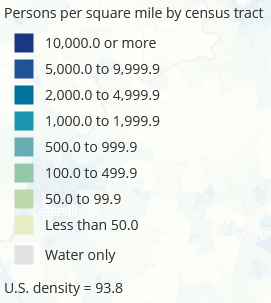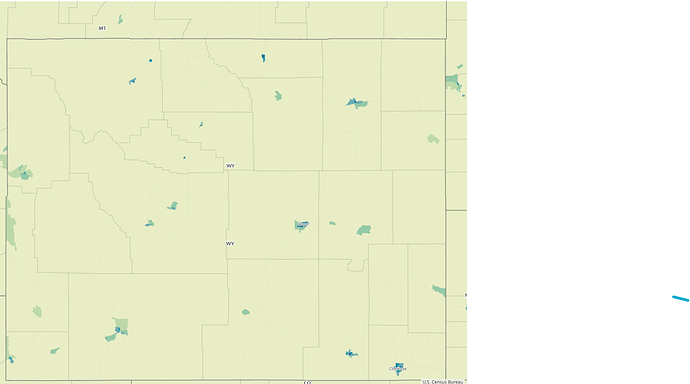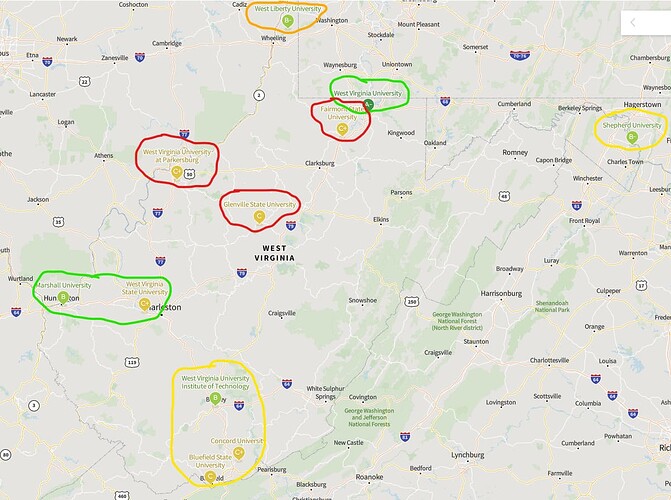This population density map has the misfortune to have my attempts at drawing the outlines of WV (in blue) and WY (in red) on it.
For the next two screen grabs, here is the population density key:

Here is a different population density view of West Virginia
And this is Wyoming (with some snips overlayed over one another because the state was too big to get this level of density on one screen):
Both states have lots of pale yellow, i.e. less than 50 people per square mile, though West Virginia does have more pockets of density than Wyoming.
Both states also have some mountainous areas:

This image, courtesy of Niche, shows the locations of the West Virginia 4-year publics.
And here is a map of the Wyoming 4-year public (note the singular):
If I was in Wyoming’s state government, I would have thought about placing the U. of Wyoming in Casper (which seems like the biggest population center in the middle of Wyoming), but the powers that be there chose to put their state school in the southeastern corner. Residents from all over Wyoming have to reside in Cheyenne if they’re going to attend college, and the university offers pretty much all fields, as expected of a flagship university.
West Virginia (the state), on the other hand, has twelve 4-year publics, according to Niche and College Navigator. As the state is now preparing to cut core programming from its flagship, that is obviously way too many schools. Looking at its population density, I could see the state going down to two state schools (WVU and either Marshall or West Virginia State), circled in GREEN. If it really wanted to have more across the state then I’d keep Shepherd and one of West Virginia Tech, Concord, or Bluefield State, circled in YELLOW. If it really wanted a fifth school, then I’d keep West Liberty, circled in ORANGE. The other 3 schools (WVU Parkersburg, Glenville State, and Fairmont State) would have to go, circled in RED. By closing 6 universities, that should be sufficient funding to make sure that one’s flagship is truly a flagship.
There’s the expression, jack of all trades and master of none. Ideally, a state flagship would be a master of all trades, but at a minimum, it should be a jack of all trades. The present proposal won’t let that be a feasibility for WVU. It’s far better to have fewer universities, and have each be good, strong universities, then have more universities that are not doing an effective job of providing higher education. (And in my not so humble opinion, if there is nobody on campus to teach a world language AT YOUR FLAGSHIP, you’re not doing an effective job of providing a higher education.)






